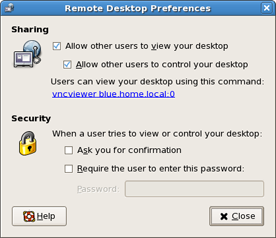This content is 16 years old. I don't routinely update old blog posts as they are only intended to represent a view at a particular point in time. Please be warned that the information here may be out of date.
My mobile handset used to be just what I needed. It’s a phone, with a WAP browser. Basically, it works for making calls and reading my e-mail via OMA – and it fits the full handsfree kit in my car that my work phone uses (yes, I have two phones… one so I can be contacted by friends and family whenever I want and the other so that work colleagues can only call me when I’m working).
But I have been tempted. I’m a geek, and geeks feed on gadgets. And whilst common sense tells me that a Windows Mobile phone would best match my needs, I am seriously tempted by the Apple iPhone, which goes on sale in the UK next week. The trouble is that even hardened Apple fanboys on some of the podcasts that I listen to admit that this is just a first generation device – an iPhone beta if you like – and at £269 (on an 18-month contract at between £35 and £55 a month), it’s expensive – especially without the 3G and GPS that other handsets offer.
I did look at the Nokia N95 but Apple’s decision not to allow their phone to be subsidised by the networks means that other smartphone vendors are pushing up their prices too (thanks for nothing Apple) and Vodafone
wanted over £300 on an 18 month contract, plus an extra £7.50/month for 120MB of data.
My existing Vodafone contract is up in a few days time, so I called them and asked for my PAC code so that, if I do buy an iPhone next week, I can transfer my number to O2. Not surprisingly, Vodafone’s customer retention department wanted me to stick with them (that’s their job). After I rejected their revised offer (“ah, the £300 was retail, but we’re able to make you a better offer”) of an N95 for £170 (still £120 more than it would have cost me a few months ago…), they suggested that if I could source an iPhone from somewhere outside the UK it would work with any UK network (UK models will be locked to O2), and they could offer me another 12 month contract, with lower charges. That sounds good, but it’s a bit underhand of them to offer that solution as I don’t think it will work – this is why:
- Even though I’m planning to be in the US next week (so picking up US iPhone would be reasonably easy) an unactivated iPhone can’t even perform non-phone related tasks like playing music and videos and activation would require a contract on a network in the country from which it is sourced (i.e. AT&T for a US-sourced phone).
- Whilst I’m sure that hackers will find a way to unlock the iPhone (again), Apple is playing cat and mouse with them, so the next software upgrade (which I could ignore) would prevent me from using my Vodafone SIM in it (and possibly “brick” the device).
- In any case, even if I never used the phone with the AT&T SIM once it was activated, I’d have problems opening an account without a US address and I’d be legally bound to a contract.
So, here’s the choice as I see it:
- Wait until next Friday and buy an iPhone on O2 with an 18 month contract: Cost £269 + (18 x £35) = £899 (with 200 minutes/200 texts/unlimited data each month).
- Buy an iPhone from an Apple store in the United States and use it over here (if it works): Cost £191.66 (at today’s exchange rate) + ((9 x £10) + (3 x £16) + (12 x £7.50)) = £419.66 with 75 minutes/stop the clock/120MB data each month.
- (Wait for the next iPhone model/buy something else/do nothing).
So option 2 looks best on paper, but what if it doesn’t work? Does anyone know if I’m right about options for using an unactivated iPhone in the UK?
 Once I’d got around this, it was fairly straightforward to connect to display 1 on port 5901 but the default display was using the rather dated
Once I’d got around this, it was fairly straightforward to connect to display 1 on port 5901 but the default display was using the rather dated